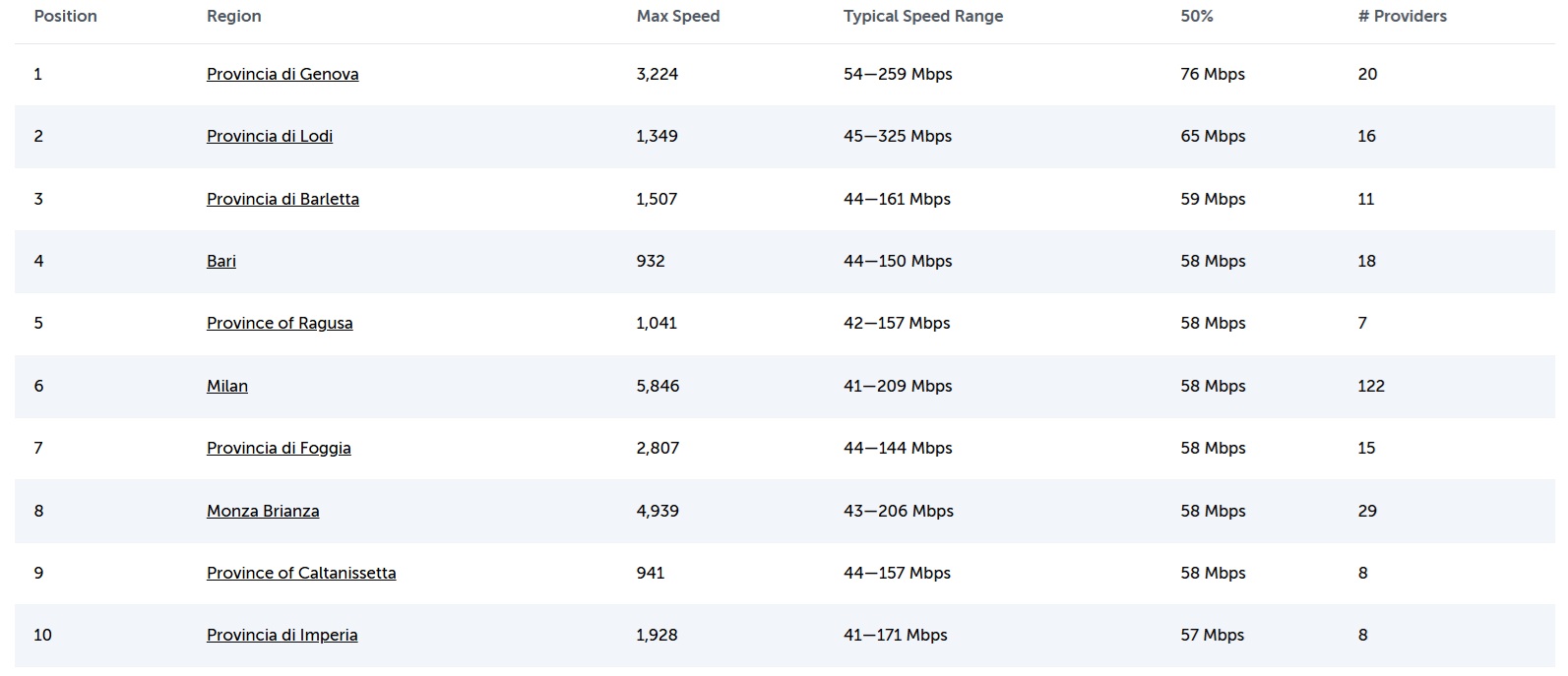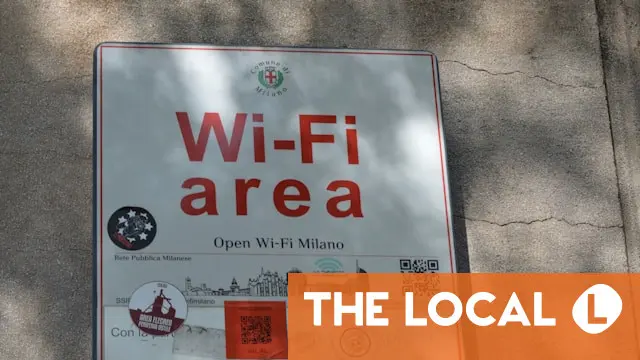If you’re thinking of working remotely in Italy, you’ll need to know how the quality of the internet connection stacks up in your part of the country.
One of the most crucial considerations for remote workers is reliable internet access and sufficient speed – and this isn’t something Italy is well known for.
While Italy’s internet speeds have improved drastically over the past decade, they remain some of the slowest in Europe, although still ahead of Croatia, Austria and Greece.
As of 2025, Italy’s internet speed ranks 46th globally, with an average speed of 117 Mbps, according to an international comparison by the Fair Internet Report.
Internet speeds greatly improved in recent years
In early 2017, the Fair Internet Report rated internet speeds across more than two-thirds of Italy as ‘very slow’ – less than 10 Mbps – whereas that proportion today is down to just 16 percent.
READ ALSO: So you want to move to Italy and work remotely?
The European Commission’s most recent Digital Economy and Society Index (DESI) report notes that between 2017 and 2022, Italy showed significant improvement in its ‘DESI score’, a measurement tool used by the EC to track the digital progress of EU member states.
Where are the fastest internet speeds found in Italy?
Within Italy, the fastest overall connections are found in Genova, with Bari, Milan, and Rome in the top 15, according to the latest report.
While Milan has by far the fastest maximum download speeds available (5,846 Mbps) and the most providers (122), the economic hub comes in at sixth place, suggesting inconsistent speed or quality for some users.
Advertisement
Rome meanwhile ranked 14th overall, with a maximum download speed of 4,913 Mbps and some 75 providers available. While this puts it ahead of much of the rest of the country, it’s a relatively unimpressive score for a major European capital.
Other major cities came further down in the rankings. Turin, in 23rd place, was followed by Naples (29th), Bologna (38th), Venice (39th) and Florence (41st).

Source: Fair Internet Report
Room for improvement
Italy is often ranked poorly as a place to live among overseas residents, with the most recent Expat Insider 2025 survey by InterNations, an information and networking site for people living overseas, again ranking Italy in the bottom 10 countries when it comes to happiness.
“Digital life” is one of the categories in which people in Italy continually report dissatisfaction in such surveys. This includes factors such as the availability of online administrative services and the ease of setting up high-speed internet at home.
READ ALSO: Italy rated one of the hardest countries for foreigners to settle in
While people in Italy’s cities might wish for faster connections, the real difficulties tend to arise for people living in rural areas.
One of The Local’s writers in 2024 described how living in the countryside near Rome meant having to “forsake all internet providers because there was simply no wifi infrastructure” and “subscribe to Starlink, a satellite provider used by yachts and campers that constantly move around in isolated places like the sea, mountains, and canyons”.
Advertisement
Offline culture
Despite consistent pressure from the European Commission for Italy to modernize its digital offerings, part of the issue has long been cultural, with international data comparisons showing a lower number of people using the internet in Italy than elsewhere.
For example, in 2017, while hardly more than half of Italians were using the internet, 85 percent of Spain was already active online.
OPINION: Italy’s new digital nomads should watch out for the wifi speeds
But this is a trend that is also undergoing rapid transformation, with a jump in internet users in Italy from only 63 percent in 2017, to 89 percent in 2024.
While the pandemic made working remotely more common in Italy, much of this effect appears to have been temporary. The most recent data on remote workers from official statistics bureau Istat shows that only 12 percent of Italy’s employees now work from home.

